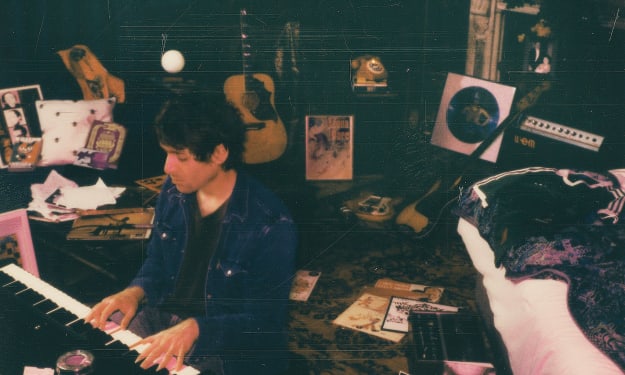Exploring the line between music and noise
Navigating the Melodic Spectrum: Unveiling the Enigmatic Realm Between Music and Noise

Back in the year 1960, a curious event unfolded on national television that left viewers both puzzled and intrigued. This was the work of an American composer named John Cage. Unlike traditional composers who used familiar musical instruments, Cage was surrounded by an assortment of everyday objects. Among the curious items were a bathtub, ice cubes, a toy fish, a pressure cooker, a rubber duck, and a collection of radios. Armed with these unconventional tools and armed with nothing but a stopwatch, Cage performed what he titled "Water Walk." The result was a symphony of unexpected sounds, delivered with utmost seriousness and precision. Some viewers found this performance to be uproariously funny, while others dismissed it as utterly absurd. However, a common question lingered in the minds of those who witnessed it: Could this be considered music at all? The answer, as it turns out, is not as straightforward as it might seem.
The distinction between what qualifies as music and what is merely noise can be a challenging one to draw. Much of it hinges on our preconceived expectations. Imagine, for a moment, that you are inside a lively jazz club, enveloped in the rhythmic honking of horns. In this context, most people would readily identify this as music. However, if you were on a busy highway and encountered the same honking, many would label it as noise. This difference in perception arises from the fact that car horns are not traditionally thought of as musical instruments, and the drivers honking them are not usually seen as musicians. Thus, our expectations and contextual cues play a pivotal role in how we categorize the sounds we hear.
In the realm of music, our judgments are often influenced by recognizable structures and familiar patterns of sound. We tend to consider something as music if it adheres to established musical traditions or employs popular sounds in well-known arrangements. Moreover, various genres of music are associated with specific instruments and harmonies. These expectations are rooted in the existing musical customs of different cultures and eras. However, the exciting artistic landscape of the early 20th century encouraged many artists, including John Cage, to question the boundaries of their respective fields. Cage, in particular, was driven by a desire to uncover new forms of music that transcended conventional limitations.
Cage embarked on a journey of innovation that blurred the lines between art and the ordinary. He reimagined traditional instruments by incorporating surprising objects, creating a captivating fusion of the mundane and the artistic. Furthermore, he sought ways to blend music with other artistic expressions. In collaboration with his creative and life partner, Merce Cunningham, Cage orchestrated recitals where their music and choreography were developed independently before merging into a single, cohesive performance. Regardless of his approach, Cage actively challenged listeners to reevaluate their perceptions of music, noise, sound, and silence.
Among Cage's most iconic compositions stands a solo piano piece that defies expectations—comprising solely of musical rests for precisely four minutes and thirty-three seconds. This composition was not meant to be a jest; instead, it posed a profound question. Could the act of opening and closing a piano lid be considered music? What about the ticking of a stopwatch or the rustling and perhaps even the murmurings of the audience? Much like the blank canvases championed by his contemporaries in the art world, Cage urged his audience to confront their preconceptions about the essence of music itself. While this composition might not have evoked the emotional intensity of traditional musical pieces, it undeniably elicited strong emotional reactions from those who experienced it.
Central to Cage's artistic philosophy was a dedication to capturing spontaneous, ephemeral experiences rather than striving for rigid, predictable performances. He even devised methods that introduced an element of chance into his compositions. One such method involved the use of the I Ching, an ancient Chinese text used for divination. By tossing a few coins, one could generate patterns of lines that held interpretations for answering questions or revealing fortunes. Cage adapted this concept into a series of tables that dictated musical durations, tempos, and dynamics. He even incorporated early computer technology to aid in producing these random parameters. In some instances, Cage pushed the boundaries further, presenting musicians with incomplete compositions accompanied by broad guidelines, allowing them to improvise within the framework he established.
Cage's unconventional approach did not garner universal approval. Critics argued that the role of a composer was to carefully structure sound and time with a specific, deliberate purpose. They questioned whether Cage's unorthodox compositions truly constituted music or simply an amalgamation of disjointed noises. Yet, Cage remained undeterred, embodying the spirit of an intrepid explorer eager to chart uncharted territories. He refused to be confined by artistic constraints or bound by conventions of the past. His mission was to rupture the expectations of his audience, paving the way for extraordinary experiences that challenged musicians and listeners alike to embrace the unforeseen.
In conclusion, John Cage's artistic journey can be likened to a voyage into the uncharted waters between music and noise. His audacious experimentation, innovative use of everyday objects, and willingness to defy conventions made him a trailblazer in the world of contemporary music. Cage's legacy endures as an inspiration for both artists and audiences, inviting us to perceive music not merely as a collection of notes and melodies, but as a realm of limitless possibilities and unexplored frontiers. Just as Cage fearlessly questioned the boundaries of his time, we too are encouraged to expand our horizons and welcome the unexpected in the realm of art and expression.
About the Creator
Reader insights
Nice work
Very well written. Keep up the good work!
Top insight
Expert insights and opinions
Arguments were carefully researched and presented





Comments (1)
Some excellent observations, I do love those that push musical and art boundaries